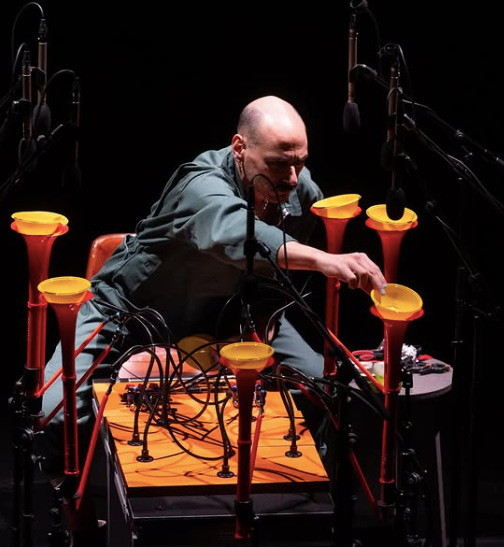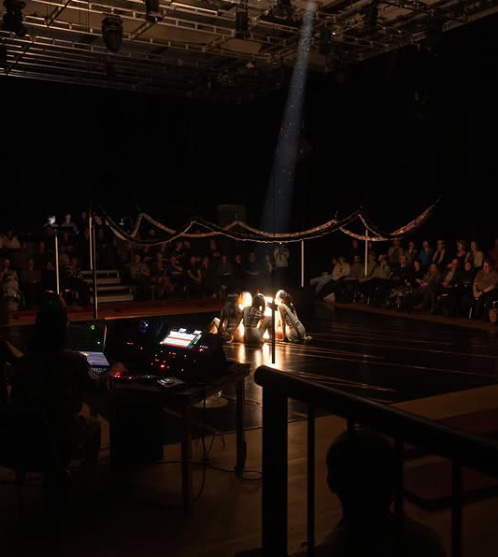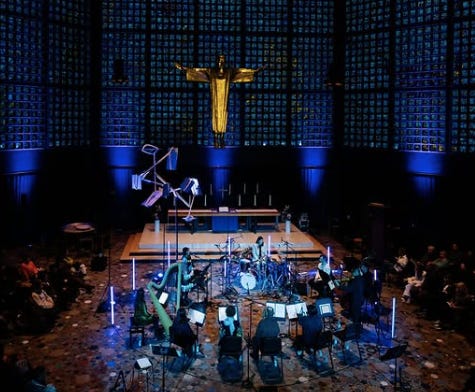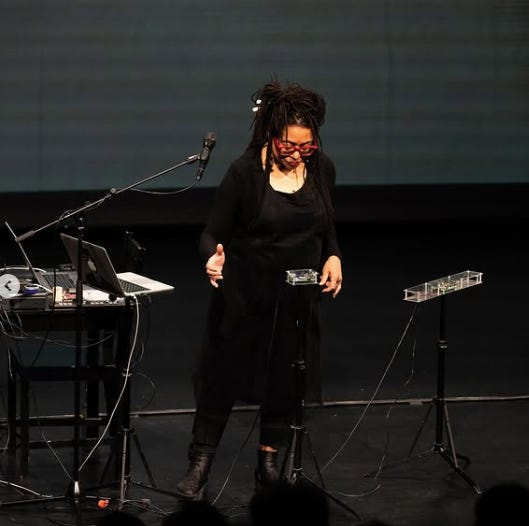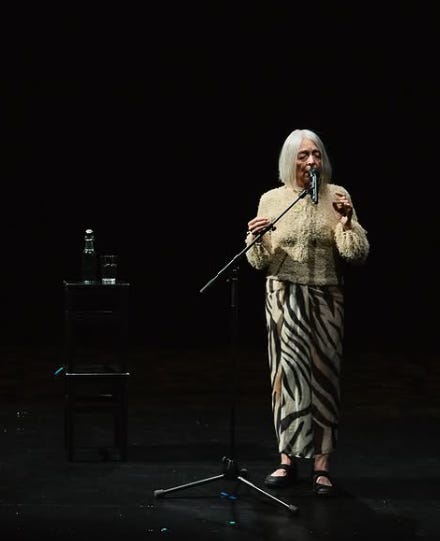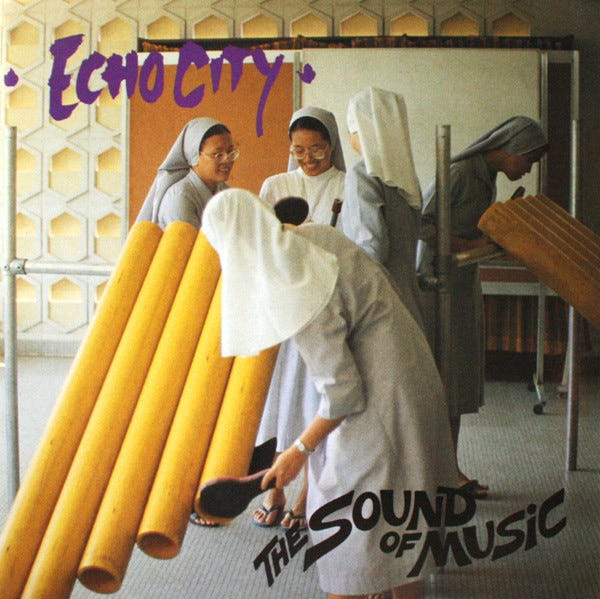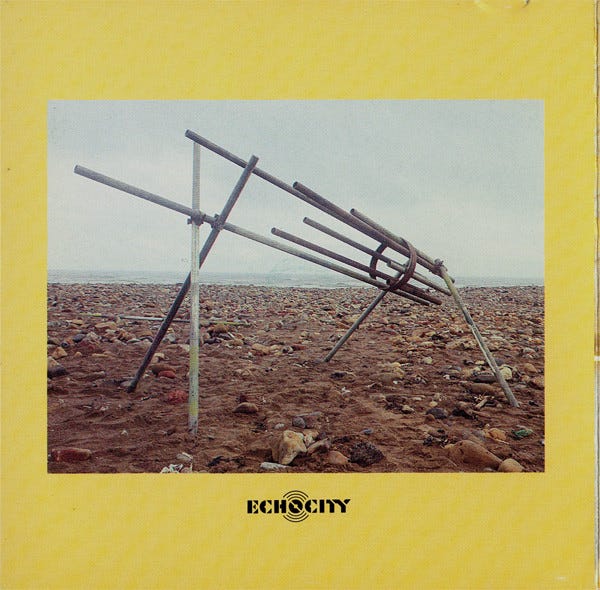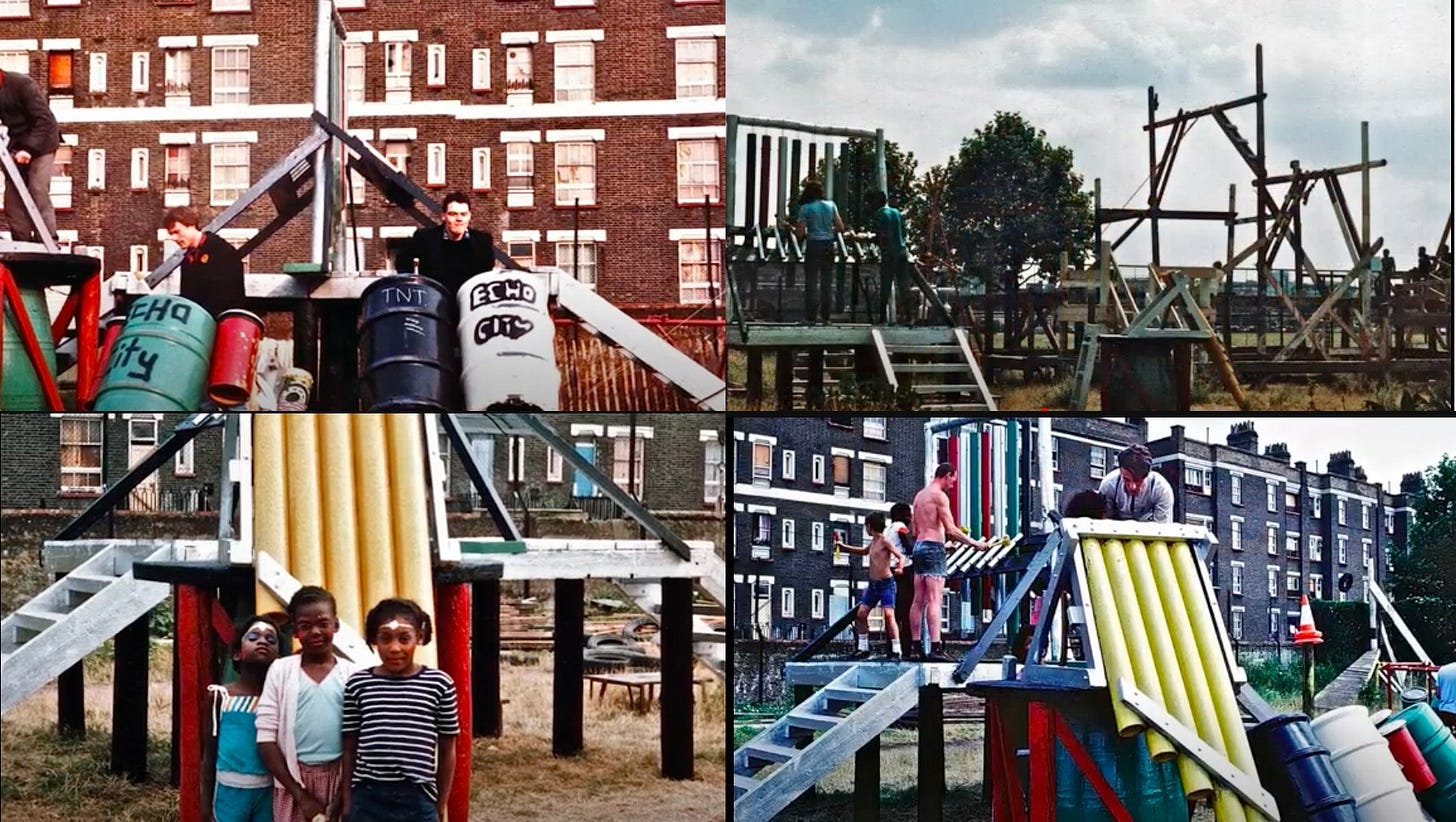[Extended cut of a much shorter review out in The Wire, split into parts for ease of reading. Part 1 is here.]
Part 2: Mazen Kerbaj, Lunglesss
At Silent Green—formerly the first crematorium in Berlin—a packed programme presents a series of lengthy concerts, each of which offers three recitals in one. The music is spread over two days. There are premieres by trumpeters Mazen Kerbaj, working with new instruments, and Marco Blaauw, playing the double bell trumpet as well as a ‘Neolithic’ ceramic horn as part of his international ‘Global Breath’ project, gives a solo set of works by Elena Rykova, Ayanna Witter-Johnson, George Lewis, and Riot Ensemble conductor Aaron Holloway-Nahum, joined by electronics and, on one piece, Laura Vukobratović’s offstage trumpet; the next day, Blaauw’s eight trumpet project The Monochrome Project takes part in a set of work for varied instrumentation by Milica Djordjević, Wadada Leo Smith, Liza Lim, Oscar Bianchi and Blaauw himself, followed by a set with Raven Chacon: composed works for eight whistles and for fox hunting horns and an improvised set for solo electronics. There are also further sets by Blaauw (including Dai Fujikura’s Shimmer for two double bell trumpets and a striking piece for ‘Neolithic’ ceramic horn and alto trumpet by Liza Lim), and solo vocal sets by baritone Ty Bouque and singer Laura Bowler, including work by Nwando Ebizie, Aaron Holloway-Nahum, and others. But of all these sets perhaps the most striking is the first.
Best-known for his work as a trumpeter, and long a presence on the Berlin improv scene, Mazen Kerbaj opens the first with a piece called Lungless on an instrument called ‘Putin’s organ’, the nickname for artillery used in the current war in Ukraine made by instrument builder Thierry Madiot. His contributions here and on the second day draw on memories of growing during the Lebanese civil war, and later, the 2006 Israeli bombing of Beirut famously duetted with in his piece ‘Silent Night’.
The Putin’s organ consists of a tabletop seven red plastic trumpets rising from a table like pipes, amplified by mics ranged above, and powered by an air compressor which Kerbaj controls with hands rather than breath (even though, as a helpful audience member next to me pointed out, in this case, unlike an organ, the air comes out from the top, rather than the side of the pipe.) The title, Lungless, suggests a trumpet with no mouthpiece, no breath, but also the sense of not having a voice, as Kerbaj thinks back to the divided Beirut he witnessed growing up during the Lebanese Civil War and the silencing of the voices of Palestinians—and those in support of Palestinian rights—that has taken place across the western world, but whose impact has been particularly felt in Germany and the US. During the world wars, German organ pipes were sometimes melted down for use in weaponry. Meanwhile, ‘Stalin’s organ’ was the nickname given the Katyusha, a huge Soviet rocket launcher with a distinctive howling sound used during the second world war, and then again in the Lebanese conflict, the updated name reflecting the current war in Ukraine.Here, the metaphor which turns musical organ pipes into rocket launchers, transforming war to music or music to war, is reversed, as the instrument becomes the metaphorical displacement of the war artillery that had served as metaphorical displacement of the instrument.
After hearing the premiere of Luigi Nono’s A floresta é jovem e cheja de vida in 1966, Italo Calvino wrote to Nono to question his use of “blocks of absolute, total, black noise” to represent the US bombings taken place in Vietnam. Calvino’s was partly a question of realism: having experienced the sounds of bombing and wartime conflict close up as an anti-fascist partisan during the second world war, he asks,
is it right to represent bombardments with noise? Wouldn’t it make more sense to focus on the silence that comes with the exploding bombs? At a closer examination, the prevailing element during an air raid is silence: when the alarm goes off the population strains its ears trying to detect the sound of the approaching planes, their descent over the city, the whistling of the bombs, trying to locate the explosions; and nothing compares to the silence which follows an air raid [...] I am [...] suggesting we look at war in its essence, antinaturalistically and anti-romantically, and A Floresta led me to reflect on the acoustic essence of the war, which is crucial [...]
[T]he tragic reality of the world is being concealed in large parts of the world, where everybody is somehow under the obligation to conceal it [...] But how to articulate this? How to turn this into a worldview, a stylistic process? I can’t say: if only I knew!*
As heard on Kerbaj’s ‘duet’ with the Israeli air force, bombs are not just about aural assault, but the pauses, the silence between. Like Calvino, Kerbaj knows this close up. His answer might be that, rather than looking to turn such facts into a worldview or stylistic process in a programmatic way, one works with what one has: literal, metaphorical. Recorded far from those present bombs, the work does not try to recreate or approximate them, as Nono did. If music is a displacement or sublimation or replacement of violence or trauma or weeping, or whatever various origin stories have been proposed for it, it is nonetheless about presence, and volume is central to the piece Kerbaj creates on the Putin organ. Held notes blare out like saxophone multiphonics, then the hovering air of an organ, a klaxon, a bagpipe, an alarm, capped off with a kind of expiring squeal at the edges, swelling into beating and difference tones. Occasionally, Kerbaj raises or lowers the trumpet ‘pipes’ to slide the pitch, while pieces of foil placed over the bells of two of the pipes creates glints of light on the ceiling and a layer of rustling white noise to the sound, at once a mute reducing the noise and, with its unpitched sound, increasing it, to be replaced in turn by plastic pots which let up a rattling like crickets of fizzling electricity, a kind of out-of-time percussive layer.
At MaerzMusik back in 2019, Kerbaj presented a multi-trumpet project called Walls will Fall: the 49 trumpets of Jericho in the resonant space of the Berlin-Pankow Großer Wasserspeiche and Kraftwerk Berlin. This interested in the dense power of massed, collective sounds of horns—often, as in the Biblical story to which gestures, and the contemporary conflicts onto which it overlayers—with military connotations: signal of alarm, fear or triumph. Here this combines with lament so that the two cannot be distinguished: the trauma from the cause, the wail of sorrow, the cry of terror, the shout of defiance.
Yet despite all these metaphorical overlays—ones emphasized by the programme note, by the name of the instrument—in terms of the experience of listening itself, when everything’s at a blaring, fortissimo pitch, how do we hear the new notes that creep in, how—both literally and metaphorically, do we keep attention on something (a sound, a political crisis or ongoing crime) that pummels to silence, to stunned and stopped listening? In our contemporary soundscape, the sonorism of an earlier moment—say Penderecki’s Threnody for the Victims of Hiroshima, which now appears as the burst heard on a horror movie soundtrack, nullified into the kind of background its piercing massed strings refuses—has lost its impact: noise is style, atmosphere, surrounding rather than interruption. And this is true of the environment of war, of mass death, of genocide on livestream, or the reality of those not watching at a distance, but facing that death.
Even Penderecki’s piece, we might recall, only took on its politicized title at the last minute, after the music itself had been composed with a more neutral name. And what Kerbaj plays on the ‘organ’ is not an attempt to depict programatically, but, as so many shut off their ears to the cries of victims and the cause of justice in the name of realpolitik or simply not wanting to know, an injunction to listen again—to keep listening. Hören, to hear, zuhören, to listen, and aufhören, to stop. At one point, half the row in front of me have their hands over their ears, and, paradoxically, this serves precisely as the figure for what this work does, aiming to free up active listening: a listening with, or listening against, rather than simply a listening to. The continuous cloud or block of sound that the piece generates is not the model of catharsis or ecstasy found in much drone or noise music but instead, a marker of unavoidable presence: survival, refusal.
In Part 3: Vocal sets by Ty Bouque and Laura Bowler, music by trumpeter Marco Blaauw, compositions and improvisation from Raven Chacon, and a further set by Mazen Kerbaj.
*Quoted from Italo Calvino’s correspondence in Carola Nielinger-Vakil’s indispensable Luigi Nono in Context (Cambridge University Press, 2015).
